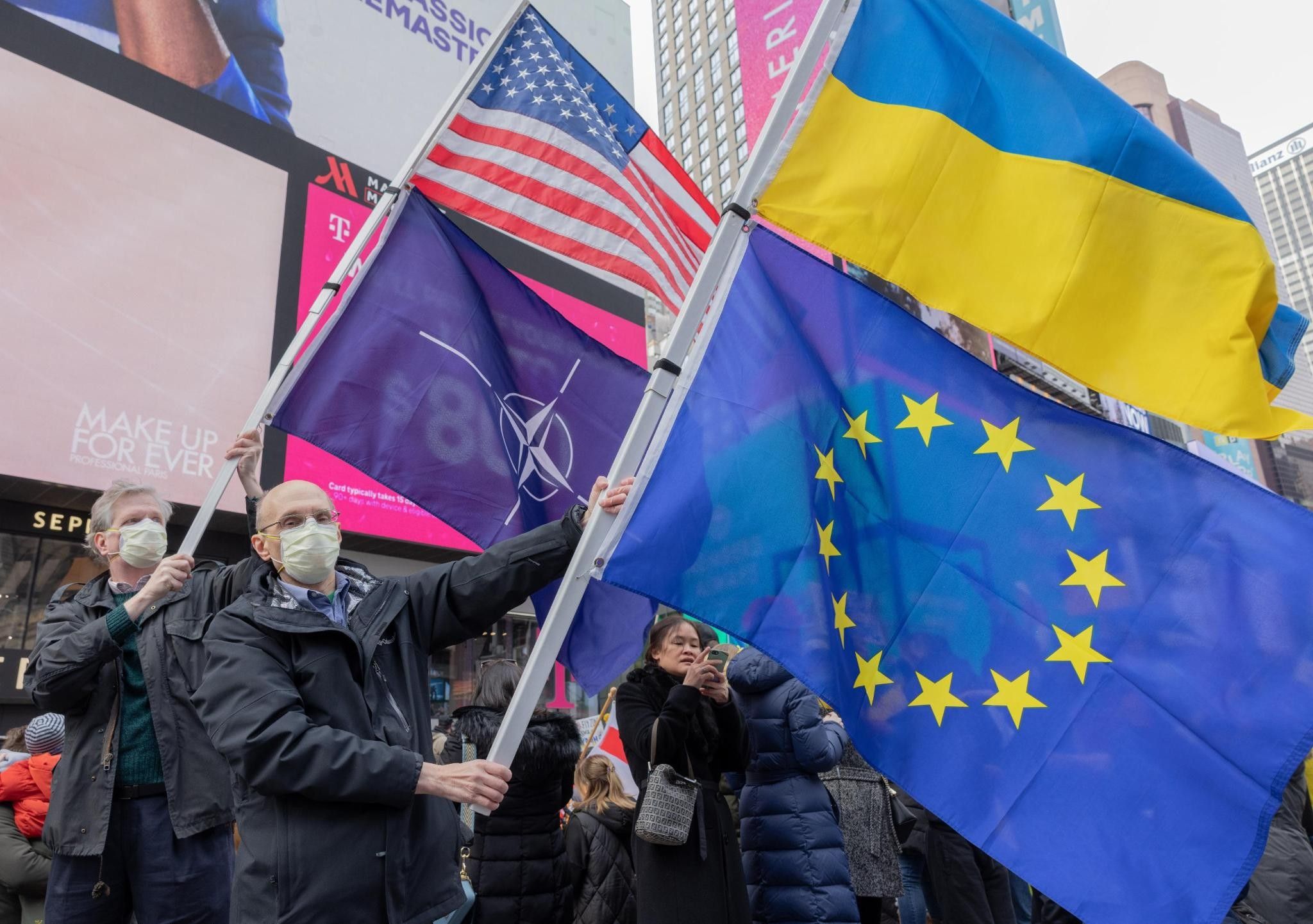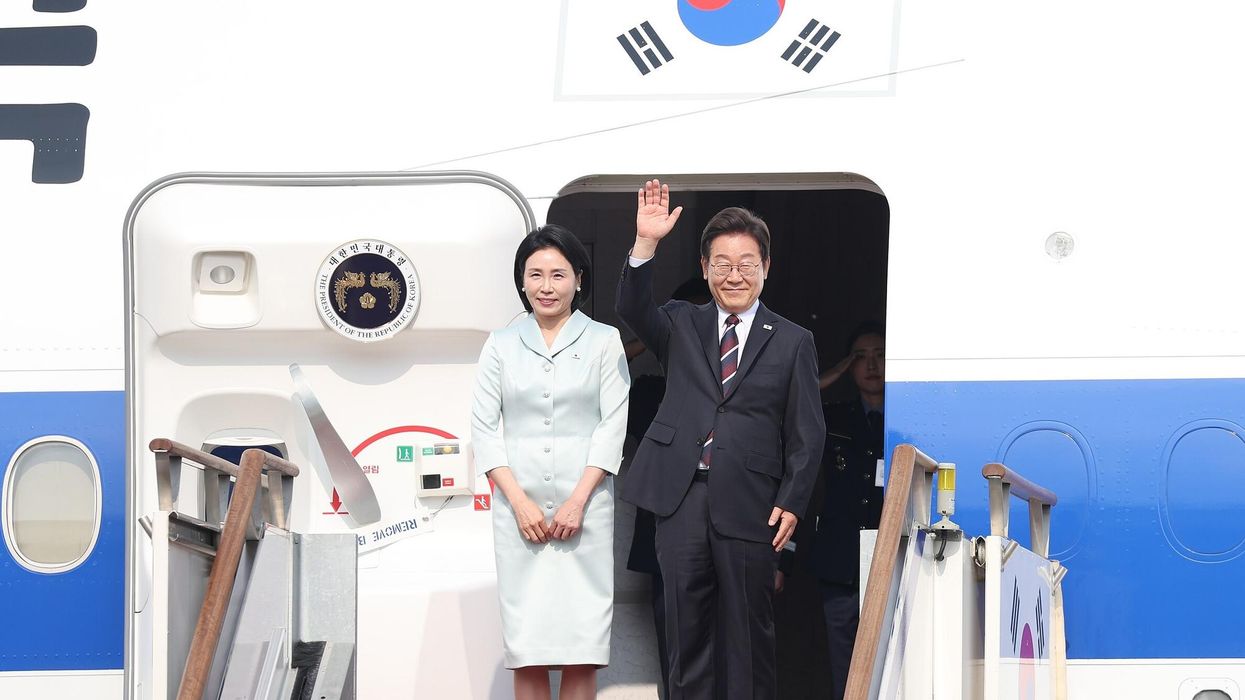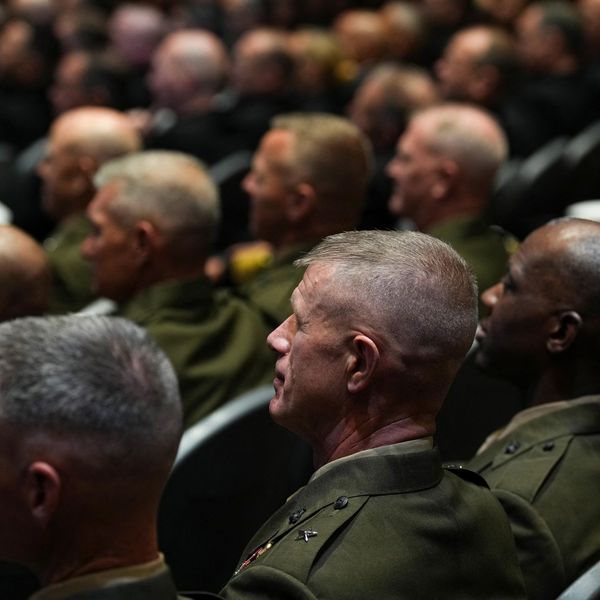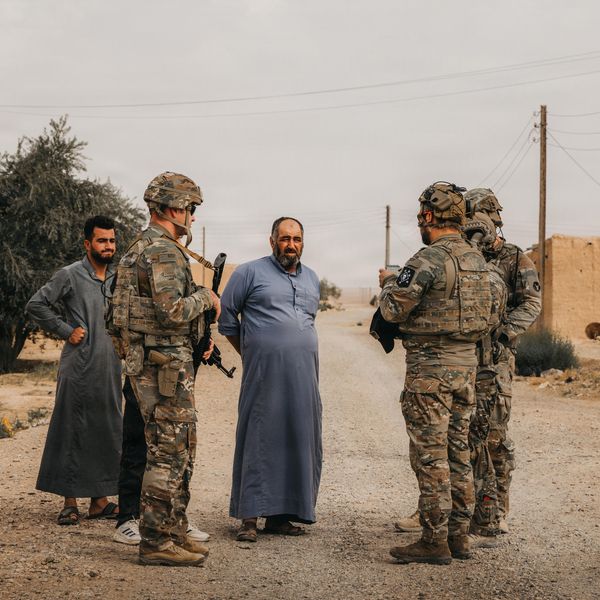NATO likes to present itself as “the most successful alliance in history,” not because it was successful in war, but because it prevented war, and also simply because it has lasted far longer than most alliances.
What this propaganda narrative, however, obscures is that NATO during the Cold War avoided actual war not just by deterring the Soviet Union, but by eschewing actions of its own that would have led to war.
The only ground war in which NATO has ever been involved, in Afghanistan, ended in disastrous failure. The U.S. military’s view of its European allies in Afghanistan, and indeed, a central feature of NATO itself, was pithily summed up for me by a U.S. officer in Kabul: “They pretend to fight, and we pretend to listen to them.”
During the 75 years of NATO’s existence, there really have been three NATOs: two with the mission of containing Russia, separated by one which thrashed around wildly and disastrously in search of a new mission. NATO I achieved a complete but peaceful victory when the Soviet bloc collapsed from within — though this came as a result above all of Communism’s own failed promise.
NATO II threw away the fruits of this victory through a disastrous kind of frivolous megalomaniac dilettantism. It thereby helped to usher in NATO III, whose eventual fate remains uncertain.
Key to understanding the role and the success of NATO I (1949-1989) is that it operated only in Europe, and in accordance with George Kennan’s original conception of containment. That is to say, it set out to prevent further Soviet military expansion in Europe, and to provide a military shield behind which western European countries could develop as successful economic and political systems.
Their success in this regard, compared to the manifest failure of Soviet Communism, eventually brought about the Soviet bloc’s collapse from within, just as Kennan had foretold. NATO thereby also helped the U.S. to retain access to European markets, hegemony over the eastern littoral of the Atlantic Ocean, and ideological and cultural prestige as the leader of the “Free World.”
When NATO was formed, and for many years thereafter, several of its European members were engaged in ferocious wars in Asia and Africa in an attempt to retain some portion of their colonial empires. NATO, however, was not involved in these wars, nor in the U.S. war in Indochina and other Washington-backed anti-communist operations around the world.
Above all, NATO I and (after a brief wobble) the U.S. itself, eschewed ideas of “rollback,” the attempt to drive the Soviet Union out of eastern Europe through the fomentation of revolutions backed by NATO military force. Three moments were critical in this regard: the disastrous failure of the American and British attempt to overthrow the Communist government of Albania through a royalist rebellion assisted by U.S. and British special forces officers (Operations “Fiend” and “Valuable,” 1946-49, which cost around 300 American and British agents their lives).
The second was Stalin’s withdrawal of support for the Communist side in the Greek Civil War, and third, President Eisenhower’s decision (ratified by the Solarium Exercise in 1953) to oppose rollback in Europe and stick to containment.
The Soviet Union too, though it suppressed anti-Soviet revolutions in eastern Europe, and backed anti-Western revolutions elsewhere in the world, was careful not to initiate or provoke military conflict in Europe itself. Behind this mutual caution lay the mutual recognition that their positions in Europe (unlike in Africa or Asia) involved the vital interests of both sides, and that if these were seriously threatened this would mean war, most probably escalating to nuclear war and mutual annihilation.
With the end of the Cold War, this NATO prudence evaporated. The Soviet collapse was seen as the unconditional triumph of the West. The resulting “End of History” mentality led to strategic and ideological hubris, which then combined to disastrous effect with other factors. Among these, the newly independent east European states (and their lobbies in the U.S.), obsessed with fear of Russia, clamored for membership.
Somewhat paradoxically, this took place at a time when Russia was so weak that Moscow’s concerns and reactions were treated as unimportant. In 1995, a senior German diplomat in Moscow told me that Russian fears were irrational, “because NATO is not what it was during the Cold War. It has changed.” I asked him what it had changed into. “We are still deciding that,” he replied. When made to Russians, such statements began the process of alienation that culminated in the Ukraine War.
The NATO organization itself of course, like any great bureaucratic institution, was obsessed above all with finding reasons for its own survival on which so many military, bureaucratic and academic jobs in Europe depended. The almost unanimous opposition to NATO expansion among serious Russia experts (including Kennan himself) was simply brushed aside. Many, when they saw the struggle as hopeless, became silent or went over to support.
As Russians warned, the expansion of NATO (and the EU) to eastern Europe brought into the alliance nations with a deeply ingrained fear and hatred of Russia. These Russian warnings were dismissed with the argument that once their security was guaranteed by NATO membership, this fear and hostility would disappear. Nothing of the sort happened. Instead, these sentiments fused with NATO’s built-in structural hostility to Russia inherited from the Cold War.
Some effort was made to convince Moscow that NATO expansion would be combined with cooperation with Russia, above all through the creation of the NATO-Russia Council. In practice, however, this institution proved almost completely meaningless, for all the NATO members formed a bloc under U.S. guidance, and instead of negotiating, simply overruled Russia whenever there was a point of disagreement.
With the solitary exception of the invasion of Iraq — which Germany, France and most other NATO members opposed — NATO countries refused publicly to align with Moscow against Washington even on issues where they were in fact in deep disagreement with Washington policy. The George W. Bush administration’s withdrawal from the Anti-Ballistic Missile (ABM) Treaty in 2002 was one example.
The promise of NATO membership to Ukraine and Georgia in 2008 was another, far more disastrous case where West European opposition bowed (albeit in qualified fashion) to U.S. dictation. It brought NATO into direct confrontation with Russia’s determination to maintain a sphere of influence and security zone in its immediate neighborhood, in areas where the Soviet collapse (as with the end of most empires) had left behind actual or potential ethnic and territorial conflicts.
And yet at the same time, NATO nor its individual members, had a plan or actual desire to fight Russia. Repeated warnings that NATO membership for Ukraine and Georgia would mean war were literally laughed away by Western diplomats. As a former officer attached to the NATO Secretariat told me, the Secretariat did not even discuss contingency plans for a war between Georgia and Russia after — on U.S. orders — it threw its weight behind NATO membership for that country.
As he explained, NATO expansion had been sold to Western parliaments and publics on the premise that it would involve no costs and no risks. Even to discuss the possibility of war was therefore taboo. As a result, NATO’s European members acquiesced in a program of expansion that they had been warned repeatedly would lead to war, while making no preparation for war, and continuing to rely for energy on imports of cheap Russian gas.
NATO III now finds itself in something that it, and its American hegemon, were careful to avoid during the first Cold War: a proxy conflict with Russia not in Asia or Africa, but in Europe itself, and in circumstances that in the long run strongly favor Russia.
The resulting (largely imaginary) perception of a Russian threat to western and central Europe has in turn led to even deeper European dependence on the U.S., leading to growing alignment against China, and acquiescence in Israel’s U.S.-enabled crimes in Gaza.
The threat of climate change, which is already having a savage effect on NATO’s southern European members and has been described by the alliance as “existential,” has virtually disappeared from NATO’s real agenda. And while during the first Cold War, the vast superiority of the West’s social, political, and economic systems became completely obvious, today these are all deeply troubled by internal factors exacerbated by migration and neo-liberal economic policies.
Assuming that we have any descendants, they are likely to view us as we do the European elites before 1914: trapped by their inherited culture and institutions, they pursued policies that seemed rational to them, but in retrospect look completely insane.
- Dreaming of an older, calmer NATO ›
- On 75th Anniversary, NATO is at a serious crossroads ›
- NATO’s 75th birthday party: all balloons, no brass tacks | Responsible Statecraft ›
- NATO Secretary General drops bomblets on way out the door | Responsible Statecraft ›
- NATO takes the plunge into the word of venture capital | Responsible Statecraft ›
















